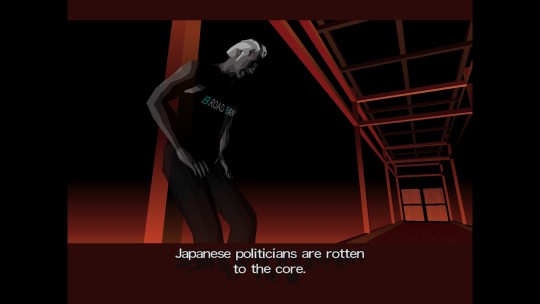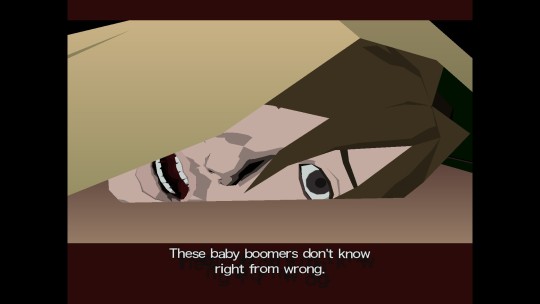#killer7 spoilers
Explore tagged Tumblr posts
Note
I don't really want to reblog your post saying this because I feel like that could be annoying but I've gotten a lot into gacha games (specifically Bang Dream, Project Sekai, D4DJ, Blue Archive, and now Zenless Zone Zero, in that order) as a 25 year old plural trans failgirl and despite enjoying them I know they are bad for me and it is my policy to not recommend them
and basically every time I find myself posting gushing over their stories or whatever I feel the need to asterisk myself with "this is a gacha game so I'm not really recommending you check it out". And like, I don't know, I feel like I should say it and it's necessary but it also feels a little tedious I guess. Like, everyone who I follow and who follows me knows this already so aah. But also then again I thought I already knew that the psychological manipulation and gambling was bad and etc and I still ended up getting super OCD over it and losing a lot of time and money to them and I would not wish this condition on anyone else. Which I guess is a more than good enough reason to continue the asterisking even if it's tedious in the same way it's tedious to say "content warning" or "spoilers for _____" or tag anything bothersome so people can filter it and sometimes you might forget to but you gotta do it anyway.
Anyway I uh. I do have like fifteen years of game playing experience prior to the gacha games where I played no gacha games. So if that counts for anything my favorite games of all time (and these are all non gacha singleplayer games) range from like,
Psychonauts (1 and 2), Milk Inside a Bag of Milk, Subahibi, killer7, Night in the Woods, VA-11 HALL-A, Tsui Yuri ~Okaa-san ni wa Naisho da yo~ (the incest yuri visual novel), Shadow the Hedgehog, if found..., Kindred Spirits on the Roof, Dishonored, Gunpoint, Jet Set Radio Future, and most importantly Senran Kagura (but not the gacha one), and many others but I'll just stop typing them now
Also I recently played the System Shock remake, which is kino and beautiful
Anyway I hope this confession is allowed. I really like your posts and your ask box has a very confessional vibe to me sometimes so I still feel compelled to it. Um, yeah. I guess, play those games. And not necessarily any gacha games. (Do that at your own risk, but also probably, really, seriously don't)
I've been trying to write a more formal essay on how gacha games can have good things in them but unfortunately still suck but ironically it hasn't yet come together because I've been distracted playing the gacha games. Hopefully I figure out that problem... Maybe with drugs or something (please)
Yeah, I don't think they are entirely bad (I still look at and reblog horny pictures from some of them often) but I wouldn't play one of those again even with full confidence that I won't fall into a gambling addiction because even putting morality and financial risk aside the very fact that they are trying to push players into it ends up worsening the rest of the game design.
Games these days (not even exclusively gacha) are sometimes deliberately made more tedious and inconvenient just for the sake of selling a solution to these invented problems. Paying to remove some arbitrary limitation or to skip a grind, for example.
The controversy around the new Star Wars Battlefront 2 contrasted with the original game highlights this very clearly. Things that used to just be a part of the game included by default are now things you have to either gamble for or play for an unreasonable amount of time to unlock. It really did not have to be that way, as demonstrated by the original game.
I think if you have been playing them and noticed all the issues it might be worth it to ask yourself if you're actually enjoying yourself on the net. Not just if the games have something in them that's worthwhile but if they are actually a fun way to pass your time. Is it play, or is it a chore you put up with to avoid falling behind or missing out on the things you do like? Would you be missing on much if you engaged with the story through youtube videos instead of playing the game yourself?
And if you do end up deciding you could be having more fun with something else, it's not like there's a shortage of other games, especially if you look into older games. Many of these are free or easy to emulate.
Looking at your list I think we have different tastes but if you enjoyed things like System Shock and Dishonored then you could maybe look into the first Deus Ex, Dark Messiah of Might and Magic, or Arx Fatalis.
(Also this is a confessional now? I guess it gives people an excuse to picture me dressed up as one of those ero anime nuns even as I maximize blasphemy and apostasy.)
8 notes
·
View notes
Text
THE SILVER CASE 2425 IS HALF OFF ON NINTENDO SWITCH - TWO GAMES FOR $20

This collection includes The Silver Case and its sequel The 25th Ward, two of the sickest, most interesting VN/Adventure games you'll ever play in your lifetime.
If you enjoy exploring themes of life, human nature, government corruption, the digital age and surrealism, you are going to LOVE these games.
No other game looks, sounds, feels or plays like The Silver Case:
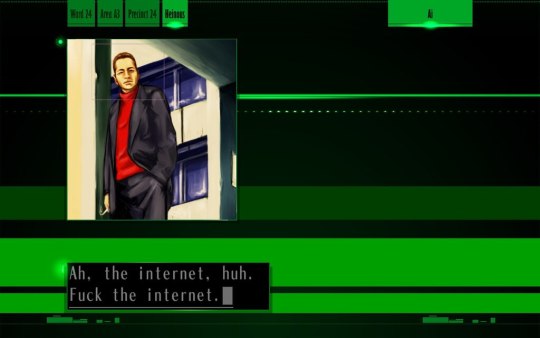

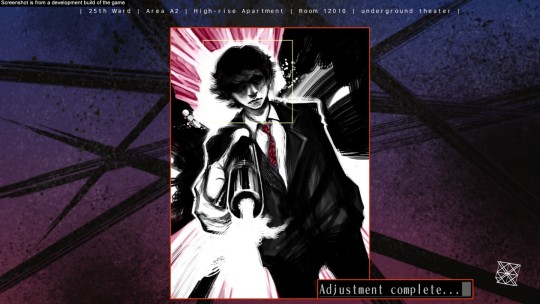
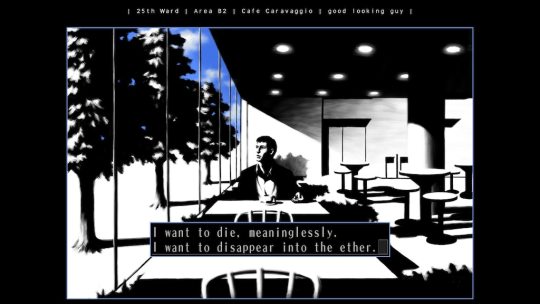
Some very notable people involved with these games include:
Goichi Suda, Lead Writer (No More Heroes, Killer7, Lollipop Chainsaw)
Masafumi Takada, Lead Composer (Danganronpa series, God Hand)
Akira Yamaoka, The 25th Ward Composer (Silent Hill series, Cyberpunk: Edgerunners)
Akihiko Ishizaka, Environmental Art (Danganronpa series, Master Detective Archives: Rain Code)
Yoshinobu Ando, Anime Scene Director (Key animator in 50+ anime series including Fairy Tail's 2nd OP, Detective Conan Specials, Sailor Moon: Sailor Stars and more!!)
I cannot recommend this collection enough - and if you're on PS4, PS5 or Steam, you can instead buy just the first part of the duology on sale for $9.99.
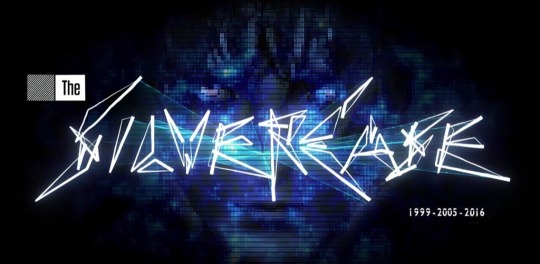
(Once you're starting to play, I recommend keeping this excellent spoiler-free guide of the game on hand. It helps you keep track of character names, events per chapter, and the recommended play order. Shoot me an Ask if you have further questions!!)
#mel alphabet soup#the silver case#silver case#suda51#kill the past#ktp#no more heroes#nintendo switch#visual novel#visual novels#adventure games#story games#vn#game recommendations#game sale#akira yamaoka#goichi suda#masafumi takada#ps4 games#ps4#danganronpa#grasshopper manufacture
4 notes
·
View notes
Text
I just finished: Bomb Rush Cyberfunk!
Alright, it's been a while since the last review and been even longer since I actually finished this game, so hopefully I will be able to get back into the swing of things again now, and remember what this was actually like.
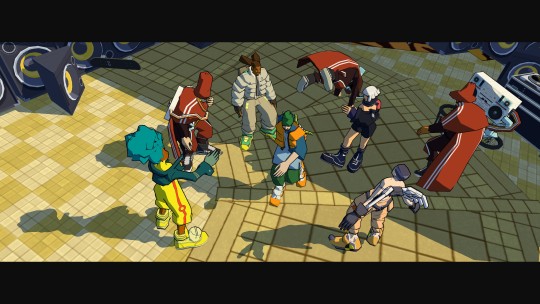
Ever since I heard about Bomb Rush Cyberfunk I was extremely excited, being a huge fan of the Jet Set Radio games, however I was aware that I'd been excited about similar projects before, so was attempting to be reserved until it actually came out - which thankfully wasn't entirely necessary.
To be clear this is not a Jet Set Radio game - much like what Bloodstained - Ritual of the Night was to the Castlevania franchise, BRC is very much it's own thing, don't expect a carbon copy - and while that thing is not too my taste as much as JSR, I do have to respect it for trying to have it's own identity.
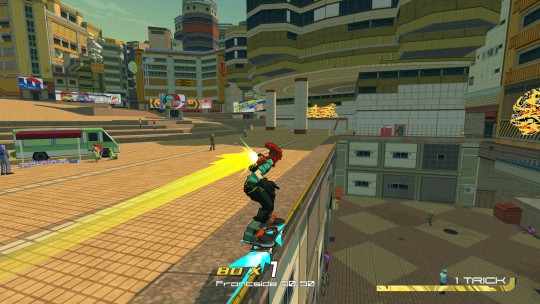
The main thing that excited me about BRC was that Hideki Naganuma, the main composer for the JSR franchise, was going to be working on it. Now he is - but his music is not as big a part of this as in JSR where it made up at least 50% of the soundtrack. He has 3-4 songs in the game, and they're all pretty good - the rest is done by various other small artists; this game didn't exactly have the budget to have something like Dragula on the soundtrack. The soundtrack is generally good, and is similar enough to JSR music - but I didn't quite jive with it as much, and the biggest issue I had was the lack of variety - most of the music was extremely similar, which when people make 'Jet Set Radio Inspired Music' often forget that the games had a mixture of music on them, not all breakbeat stuff. Again, it's not Jet Set Radio, and that's fine, but temper your expectations about how good of a successor it may be - especially considering the music is the most important part of JSR for me - that's why I was more excited about a composer from them working on this than the director or anything - it's central to it's identity.
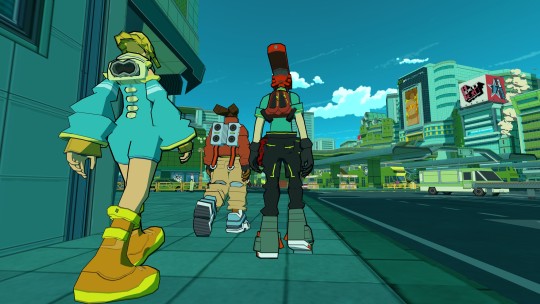
Aside from the music, the game play is very similar to JSR, and the general aesthetic, graphics and animations feel perfect. The big differences - both of which I'm not super fond of - are the addition of a focus on combat, and an attempt to do a somewhat complex story.
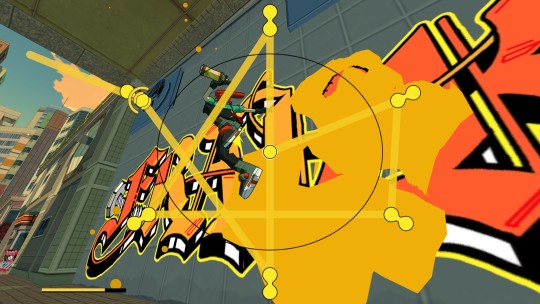
The original JSR didn't have much in the way of combat - you dealt with everything the same way: skating to get to them and then spray painting them - this applied whether your talking about graffiti, a cop, or an attack helicopter. The games also had more of a focus on running away from the enemies and not directly taking them on - not so much the case in BRC· The game kind of even has an attack button - although it's more of a trick button that is first introduced as an attack button, you can do a lot of things like in the original: spray painting enemies and such, the game just doesn't do a good job of explaining this. It also has lengthy boss encounters that take FOREVER - this is extremely boring, you can just run away from these, you have to defeat them, they happen fairly often and they just aren't FUN.
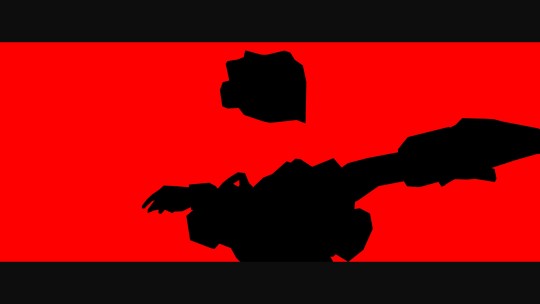
The other frustrating thing is the story. JSR of course had an extremely simple and quite silly story, an evil business man trying to take of the world by corrupting and controlling music, and the way you take him down? Friendship, of course, and spray paint. BRC had it's own ideas about this, making a far more complex and frankly boring story about characters I mostly do not care about. The game is hinged initially around a murder - someone's head gets chopped off looking like something from killer7 - and that is initially interesting but the game then insists of focusing the whole game around the character of Red - I did not like his stupid robot head and I did not like playing as him, but BRC doesn't care about that and kept changing me back to him to force me to play with their favourite. A little spoilers ahead, but the game's villain isn't even a cop or business man, its another graffiti artist - the cops are made out to be kind of cool in this as well, which I can't abide by. There's a cool women cop with a jetpack who I think your meant to like? But she's a cop?
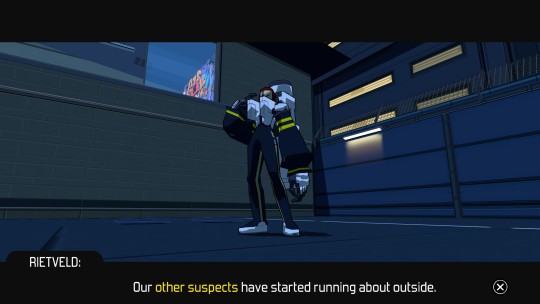
Anyway, whilst that was two paragraphs about what I disliked about the game - I still really enjoyed the game. I will say most people will probably not enjoy it enough for the £30 price tag, so wait for a sale unless your a big JSR fan like me. One thing we can maybe thank BRC for is showing SEGA that there is interest in a successor to JSR, with talk recently about a possible JSR reboot with the original team. I'm not holding my breath on that, but I am hopeful.
Grade: A
Significance: 1/3
4 notes
·
View notes
Note
the death ranger thing is absolutely funny to me because 2 things
my oc (being the personification of death) is genderfluid and generally accepts they/them, but since different cultures have different genders for their personifications of death, they can use he/him or she/her depending on the culture they delve into. anything goes
2. you ever played Killer7? mild spoilers but there's a group of Power Ranger knockoffs in there called the Handsome Men (2 of them are women), and their names are just ridiculous:
we got Handsome Red, Handsome Blue, Handsome Light Brown, Handsome Pink, Handsome White Pearl, and Handsome Dead
not even kidding, Handsome DEAD. whatever colour that is i have no idea
Ha! That's great actually
4 notes
·
View notes
Text
Killer7 -- An in-depth Critique and Review
Video Game Auteur Goichi Suda (commonly spelled "Suda51", as in, "Suda Go-Ichi")... is a very strange man to say the least. Strange is actually an understatement. Him and his work are flat-out weird.
From his repertoire, I've always been in love with Killer7, probably his magnum opus, co-developed with Shinji Mikami of Resident Evil fame, a psychotic, psychodelic extravaganza of violence and horror, following the exploits of a gang of miscreants, the Smiths, which form the titular Killer Seven syndicate.
A word of warning, I think this is probably the hardest essay I've ever had to write, given how, again, utterly fucking insane, disjointed, abstract and weird this game is. It's full of gratuitous violence and morbid themes, it was famously rushed by Capcom, the plot is unfinished, most of the actual plot is explained in a sidecar novel which I have never read, and the game loves to fuck around. If you feel that the game is being vague in its exposition on purpose, you are right.
I am also terrible at politics and this is an incredibly politically charged game (and probably the only one I've seen with the balls to actually dare tackle this theme).
It's just a weird game.
But weird shares the same etymology with both "destiny", and "word", and that's why I love weirdness: to seek your very own destiny through the articulation of words is weird. So, what will we articulate about Killer7?
Part 1. Kill The Past...
A man from humble beginnings who used to work as a gravedigger (a profession eerily close to "burakkumin" or "unpure person" territory, according to the (yes, Japan has a caste system too) Japanese caste system), he began his career with the highly dramatic "Fire Pro Wrestling", developed with Human entertainment, which tells the story of an up-and-coming wrestler who, spoiler alert, ends up suiciding at the cusp of his career. Yes, this is a Super Nintendo/Super Famicom wrestling game we're talking about.
From here, it is clear Suda is not someone who's content with following pre-determined paths and formulas in game design. His games (usually featuring edgy, profane and morbid themes, characters and dialog, presumably derived from the close experiences with Death he experienced earlier in his life) boldly twist, turn and reshape common gaming mechanics, tropes and aesthetics, often to interesting and somewhat catastrophic results.
He's never been a big seller. He had his Capcom-five era, where he contributed direction to the creation of the game this essay is about as a part of a five-game deal where Capcom would provide Nintendo with five exclusive (famous last words right there) games in exchange for heightened promotion and distribution privileges. The Capcom Five were Killer7, together with Viewtiful Joe, Resident Evil 4, PN03 and the Ill-fated "Dead Phoenix". Then he had his Punk-rock era, with the No More Heroes games on Wii, and then he had his ~sellout~, ahem, Electronic Arts era where he produced Shadows of the Damned, Killer Is Dead, and Lollipop Chainsaw, and more recently his (in my opinion) quieter GungHo/Marvelous era with Let It Die, etc.
None of those games are staples in the gaming mainstream. In fact, his games tend to sell poorly and review badly: they come full of jank, horribly short draw distances, low framerates and weird control schemes. He has never produced anything which controls better than a 2006 Xbox 360 game, even to this date. Yet he must be considered by the gaming enthusiast if they dare appreciate the medium in full just out of the fact how utterly batshit insane his stuff is sometimes. You will not find a similar brand of insane anywhere else.
Cue the predictable comparison to "The Tarantino of Gaming", which he'll gladly accept but which I actually think is a disservice to Tarantino as much as I love his stuff. Like him or not, he is present in the gaming collective unconscious, and he's here to stay.
(I'm sorry Suda-san. I love you and GHM).
(But please stop producing games with jank).
Beginning with 1996's Twilight Syndrome, a game unpublished in the Americas, we're introduced to Suda's "Kill the Past" series, which is the moniker given to a series of action-adventure games loosely tied together with recurring motifs and themes in a common world (Perhaps, egad!, predating the newfangled multiverse thing y'all dang kids love so much with your Marvels and your DC's and your endless molochian media spirals).
"Kill the Past" comprises several different games, of notice, including the very recently localized Silver Case, Flower Sun and Rain (FSR) Killer7 and the No More Heroes series. These games share a common theme of events in the past coming back to haunt the games' characters and them needing to move on by destroying something from that past, enveloped in violence, crassness and even some comedy. Add a couple fourth-wall breaks, cel shaded graphics and commentary about gaming and the gaming industry while we're at it.
Common elements in "Kill the Past" are the Moon, Death being apparently meaningless and reversible in the Suda-verse, systems of analog televisions or appliances causing static fuzz and people somehow gaining strange powers through them, 8 bit aesthetics, and Assassins being either the main characters or prominent in the stories (the Smith syndicate is a bunch of Mercenaries, Travis Touchdown goes on a killer rampage to get laid, and so on and forth). Other recurring elements are the company Ishizaka (labelled ISZK in appliances and elsewhere in the game world), characters reappearing in different series and even meeting each other, and severed heads (in paper bags). Kamui Uehara, a character very important to this series, appears in Travis Strikes Again and No More Heroes 3 as part of the plot, but I haven't actually played the game where he's featured the most, The Silver Case, and I hated TSA. I did complete NMH3 though (and I hope the No More Heroes movie by Takaashi Miike truly does happen, Suda).
Anyway.
Part 2. ...Shoot the Future
Killer7 follows the adventure of the Smith Syndicate, a vicious, bloodthirsty group of eight mercenaries all sharing the Smith last name: Harman, Garcian, Dan, Kaede, Coyote, Con, Kevin and famed luchador "Mask de Smith", covertly employed by the goverment of the USA to do their bidding. Their characterizations are perfect, and some of the very best I have ever seen in games, even if the game is not very complex otherwise.
Notice the interesting correspondence between seven and eight to begin with. The two main currents of mysticism, let's call the first "Mesopotamian" and the second "East Asian" mysticism (even though these umbrella terms may be a bit of a disservice to them, but bear with me), both define their own mystical numbers in their mythos: from "The One" of henosis comes two (male and female and other polarities) because one was lonely; from two came four (the four cardinal points, the four elements) because they were fertile and full of life, and from four came everything, and this is where things branch: from four comes seven (planets, seas, continents, days of the week, cardinal sins...) in Mesopotamian mysticism, and from four comes eight (the eight sides of the I-ching) in Asian mysticism. It is no coincidence of course, that both 7 and 8 are considered lucky, or rather, holy numbers in their respective cultures. Also, notice the beginning of a certain theme of correspondence between both polarities: the political East and West, America and Asia, Sun and Moon, Right and Left.
The game is composed by several different chapters revolving around political tensions, each revolving around taking out one certain target: mythical Heaven Smile terrorist group leader Kun Lan, Politicians Toru Fukushima and Jean DePaul, Religious Cult Leader Andrei Ulmeyda, Curtis Blackburn, someone who Dan Smith has still an ax to grind with, mysterious Comic Book author Trevor Pearlharbor (lol), minister of education Benjamin Keane and Kenjiro Matsuoka, Prime Minister of Japan.
The plot begins after a terrorist attack on the United Nations in 2003 by an infiltrated member of the Heaven Smiles which leads to devastating effects. The Heaven Smiles are a group of strange, zombie-like kamikaze beings which communicate in grunts and hysterical laughter. They're can blow themselves up upon contact among many different superhuman abilities, such as teleportation, flying, producing blinding sights, or instant breeding en-masse, and are invisible to normal people; the Smith syndicate are the only ones who can see them after scanning them with the Killer eye (and ability which only the Smith syndicate possesses and that was inherited to them through their original progenitor, Dimitri Nightmare, who Harman Smith passed it down from --but more on that later, since I played this game when I was in college and I had no idea that such a character even existed because this is explained in the complimentary novel, "Hand in Killer7", by Goichi Suda). Many different sub-species of smiles are presented in the game world. No matter their kind, all smiles have a weak point seen as by a cluster of golden particles after scanning them the Killer eye. A critical shot to this weak point will immediately kill the creature, yielding its blood.
Blood collection is one of the very few mechanics in Killer7. You cannot even move freely. The game has been patently called "an on-rails game" but I don't agree with that denominator. It's not on-rails like a gallery shooter; instead, movement is controlled not by your directional stick or pad, but rather by pressing A or B: A advances down a certain pre-established path, which can branch at some points, and B makes your character turn around 180 degrees to run the opposite way. The directional stick chooses a branch once you hit a juncture. At any moment you can brandish your current Smith's infinite-ammo weapon using one of the triggers, in a way that's reminiscent of Resident Evil: Dan sports a revolver, Kaede uses a sniper visor on a revolver, Coyote uses a pistol, Con uses dualies, Kevin uses throwing knives and Mask de Smith uses a grenade launcher. A will shoot while you aim; the other trigger will scan with the Killer Eye. The secondary controller stick reloads.
Yes, I know, controller schemes were weird in early 2000s Japanese games.
If you hear a Heaven smile, try scanning around for them. If you see their weak point, try to hit it, otherwise it's shoot to kill. If they come too close you can use a special takedown, the "down attack", triggered with Y, which will display a cool animation. Kill an enemy and collect its blood, which will decant into thin and thick: thin blood will fill vials, which can be consumed for health restoration or to trigger each of the Smiths' special powers: Dan can shoot a big fireball, the "Collateral Shot"; Kaede can split her wrists to invoke a spirit, the old BDSM partner of trusty sidekick Iwazaru, which will reveal new paths. Coyote can steal shit, jumping massively high and breaking locks. Con goes superspeed, Kevin turns invisible and becomes undetectable by security devices, and Mask can destroy walls (which is kind of meh, because Kaede has the exact same ability, but eh, who am I to judge at this point).
Thick blood will be collected to upgrade your Smiths' abilities: trade it at save points for increased attack power, better health or to unlock new down attacks over time. I'm sad to say though that the metagame here is pretty shallow, but I don't think the game is going for depth anyway, so I forgive them.
The main gameplay loop consists of Resident-Evil style exploration, gunplay and light puzzle solving. In every map, you will run into a variety of non-playable characters which will guide you on your path, providing hints or additional items for your quest: of importance you have psycho Susie, a beheaded girl who used to assasinate people yandere style, who will provide you with a variety of "rings". A certain ring will have a certain effect on the environment on a given place: if you're next to a smoke sensor and you activate the fire ring, the sprinklers will rain. If you have the time ring and a destroyed mirror is nearby, you may be able to return it to working condition. It's all very simple, though, and, again, mostly played for style than anything, reminiscent of classic Silent Hill puzzles or the like.
There's also good old Travis, which some fans believe to be the spirit of the Travis Touchdown, or related to him somehow, a friendly spirit who chills around and provides additional backstory and hints as to how to proceed. Since it was actually 100% confirmed that No More Heroes and Killer7 actually happen in the same timeline and game world, I wouldn't discard this idea, but it has never actually been confirmed by Suda.
Upon performing certain tasks in the game world, you will obtain a variety of bizarre artifacts; of importance, the "Spirit Shells", bullets of a weird nature which can be traded at the vinculum gate, a weird extradimensional dimension where a mysterious gatekeeper will take your shells for entrance. Every level has a different requirement of shells, once satisfied, you will be allowed into a liminal space, a single, simplistic, straight corridor where "Rave On", pretty much the very best music track in the game, will play for a few seconds. I think there's some kind of symbolism, some ironicism, to constraining your very best piece of work to a single corridor which will be ignored by most players, but the nuances of it escape me. After this, you will end up at the Battleship Island, invariably of your location, an artificial island where the boss fights, somehow, ensue.
Through your adventure, the story exposition of each chapter will be related in wildly varying styles: some chapters rely on in-game cutscenes, some play pre-rendered cutscenes, and others, somehow, fallback into showing you story bits in anime style and American comic-book style. You will fight several different bosses, all commandeered by the Heaven Smiles and their leader, Kun-Lan.
Kun Lan, in my opinion, is a metaphor for, again, "The East". I insist, I am terrible at politics, so, I am so, so sorry that I'm going to get this wrong, but the main theme in the, plain and simple, is the constant opposition and collaboration between both forces: America and Japan, Occident and Orient. One cannot survive without the other; yet, one is continuously at odds with the other, vying for dominance, challenging it, and sometimes even being dangerously comfortable in bed together. One has to delicately negotiate against the other for their mutual, continued existence. This is perfectly laid down with the introduction of Kun Lan and Harman Smith in the first chapter, where "a never ending conflict, a wheel which will only keep turning" is presented on top of the Seattle Space Needle, and with the depiction of the Heaven Smiles as dangerous, foreign invaders.
The Killer7, thus, are the Strong arm of the USA against the opposing forces; through Resident-Evil style files and other recourses, little by little, the fact will be introduced that, somehow, the Smiths seem to be multiple personalities of a single person: Harman Smith. Even though he's shown to be an elderly man with a mysterious, dark past of assasination, he will take over by force in certain critical elements of the plot. Dear and near to him is his disciple Garcian, who he took interest in from his High School days, when the old Harman Smith worked as his principal.
Eventually it is revealed that Garcian Smith is the real main playable character in the game and the true commander of the personalities. You see, if you're fighting and your current Smith dies, Garcian Smith will jump into the fray. Armed with a humongous, human-sized attache case, he's the only one out of the eight Smiths capable of collecting and reviving the corpses of the other Smiths, represented by a severed head on the ground inside of a paper bag. In his own words, he's a "cleaner". This is introduced as a very stylish way to not have to recur to a classic Game Over screen and return to checkpoint penalty, like most other games do.
Killer7 does use a checkpoint system, though. Spread around the game world, random rooms will lead you back into "Harman's Room", a mystical otherworldly room inhabited only by Iwazaru and Samantha, the maid of the Smith syndicate, which eerily reflects the room of the actual Harman, who lives wheelchair-bound in a trailer in the outskirts of Seattle, Washington under the care of a rowdy teenager named "Samantha" and Garcian.
Every time you visit Harman's Room in-game, this will serve as a checkpoint, the next spawn point where Garcian will spawn if your current Smith dies. In Harman's room, you can also save your game and re-awaken Smiths by using blood, if still dormant, by using the TV; you will also be able to switch personalities here, even though the ability is contextual and always available to the player from the pause menu. Not every Harman's Room is the same, however --some of them will actually be copies of the real version, and you will not be able to save your game in those. Why? Your guess is as good as mine, but I thought we had already forgone any possible semblance of this game making any sense by this point.
Part 3. Vote Falsification
"Hello Mister Smith: the election is drawing near. Have you decided on your vote? If you haven't please let the Republic Party make the most of your precious vote. Thank you, and have a nice day."
You will listen to this robocaller spiel at the beginning of most episodes in Killer7. The Republic Party (not to be confused, but perhaps alluding to the Republican party) is the most influential political party in the world of Killer7, and it's implied that they're calling the shots. The Killer7, driven by the unconscious, are actually moving its agenda forward by the strategic elimination of their targets: kill a Japanese politician, and you ensure that whoever the goverment of the USA wants in power there ends up in the post. Kill a Cult Leader, to avoid an insurrection. Kill a Comic Book author whose plotlines actually come true in real life to ensure hegemony.
But it is succintly revealed, little by little, that the goverment of the USA is a facade, instead being a puppet to a deep state: where do elections take place? In schools, and who handles the organization and execution of an election? The Ministry of Education, which is shown to be infiltrated by the Japanese, as part of the ongoing ploy for dominance which both sides have against each other. So the Ministry of Education is who actually holds the power in the world of Killer7, since they get the leverage to manipulate elections at whim. One of the last fights in the game occurs in a school, next to the ballots.
The Japanese-infiltrated Ministry of Education is also shown, little by little, to have a covert program to create assasins for the aid of the Japanese goverment: Japanese handlers train and mentalize certain gifted children in the US, MKULTRA style, into becoming cold, bloodthirsty killers. Their methods open the third eye of the kids and create multiples in their minds, which are inhabited by the souls of the people they assasinate.
Garcian then realizes his part in this. Late in the game, Garcian Smith goes rogue due to the assasination of his trusty informant and friend Mills, and he finds the file of a child by the name of "Emir Parkreiner" in an old school, by playing Russian Roulette with Benjamin Keane, one of the targets. Emir is the latest child of a certain family of notoriety, who then murders every person in his school including the Principal after a psychotic episode, who was an incarnation of Harman Smith. Realizing that he had a third eye, Harman takes interest in him and takes him under his wing, and then was absorbed as one of the multiples.
Emir was then recruited and his past was covered up by the goverment of the USA, who hired him to ambush the Killer7 syndicate at the Union Hotel (a location which occurs later in the game, which is an allusion to another Suda Game, Flower Sun and Rain), from which he gained their personalities as multiples and later suicided on the roof to avoid the suffering.
Garcian then realizes, obviously, of course, that Emir is... Himself. This realization is represented by the reopening of his third eye in a certain scene. Even though he's an American, Garcian somehow exhibits Japanese demeanor and habits, like traditional bowing and the like --a remnant from his Japanese handlers. He has flashbacks of killing the early Harman Smith, Kun-Lan and the killer7, which were actions he took as Emir Parkreiner. Lastly, once he reaches the roof, he finds an effigy of the early Emir Parkreiner, a younger version of himself, with an open third eye. The game concludes once you kill him, perfecltly tying into the Kill the Past theme, with Garcian snapping out of it in the middle of a nervous breakdown. He opens his suitcase for the first time, to reveal that all of the weapons of the Killer7 were always inside all along, which proves that in reality, it was always merely Garcian who you controlled, and the personalities were illusions.
Part 4. Epilogue
The game concludes with a visit to Battleship Island, which is a man-made island set between Japan and the USA in the Pacific accessible through an inter-continental highway, a theoretical development in the world of Killer7, kind of a metaphor for Hawaii and Japan. Missing his Killer eye now and using the same Golden Gun he used to kill the Killer7, Emir visits the Island to put an end to the Heaven Smiles. The last one of them, which may or not be Iwazaru and who is revealed to be, of course, Kun Lan, lies in a room guarded by the Japanese Prime Minister, Kenjiro Matsuoka.
Your access to this room depends upon your answer to a dilema, in the ultimate conclusion to the game: do you Extinguish the Japanese empire for good through the assasination of Kenjiro Matsuoka, or do you let him live to fight another day, so that the true Imperialistic intentions of the East are fulfilled?
I will conclude this most brief essay with a declaration of love: I love this game and when I originally played it, I was oblivious to most of it. Due to the incredible work of the developers, the game has recently been re-released for PC, in High-Definition, to showcase its beautiful visuals in all their Glory. It's like Resident Evil but by sick fucks, for sick fucks. There is no way, and I insist on this, no way at all that a game like this, with sex scenes, blood everywhere and a cuss tally, would ever be released in today's day and age, and that makes me both sad, yet happy that this weird little gem exists --so definitely, give it a play as soon as you can.
3 notes
·
View notes
Text
Killer 7 - Live Now

We're in a tight spot in KILLER7
A game I've wanted to play for a long time and somehow managed to avoid most spoilers for for around 18 years.
Lets enjoy some surrealist Suda51 shenanigans!!
Link Below!
twitch_live
0 notes
Text

i've uploaded a web version of my 2nd ghm zine. this version does not include the two secret illustrations present in the physical version, but i hope you enjoy it nonetheless
#no more heroes#no more heroes 3 spoilers#killer7#killer7 spoilers#the silver case#the 25th ward#flower sun and rain#shadows of the damned#killer is dead#lollipop chainsaw#kurayami dance#shin-hopperman
72 notes
·
View notes
Photo
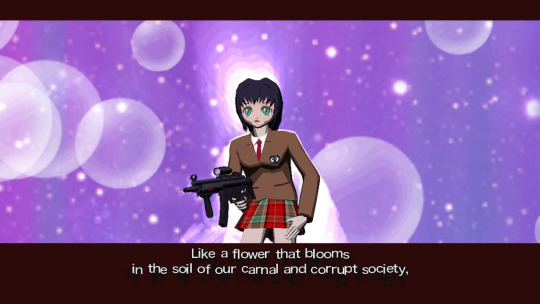

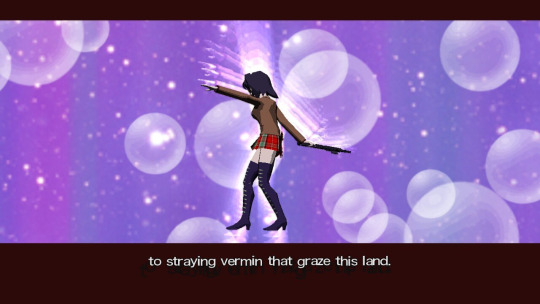
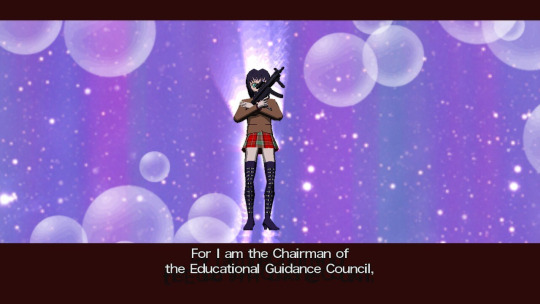
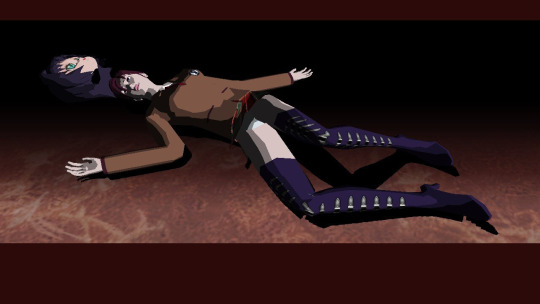
K I L L E R 7
34 notes
·
View notes
Photo





Killer7 but as Tumblr Text Posts [First Edition]
(Image Description in alt text!)
#Killer7#my.image#grasshopper manufacture#Suda51#image described#ok to reblog#killer7 lives in my head rent free#killer7 spoilers
39 notes
·
View notes
Text
some very important dan smith/ashleigh ship lore / character motivations / fixing plot holes because i’m in an angsty mood:
SLIGHT Spoilers, but nothing major but I will tag it as ‘killer7 spoilers’.
In Killer7, or at least the media of it (Hand in Killer7 and the game manual) mention that Dan Smith is very hostile towards Harman Smith (the old man in the wheelchair). it says this in the manual:

[ID: white text against a red background, text reads: Although Dan is able to open up to Garcian to a certain extent, he doesn’t bother hiding his hostility towards Harman, and is just waiting for the perfect opportunity to take his life. end of ID.]
There really isn’t anywhere in the game in which Dan and Harman share a scene, if there is it’s left in the game files, unused or it got cut. But it is demonstrated that Harman is in a Coma for a bit of the game, and Dan is the one who caused it because he tried to kill him. This is mentioned in Hand in Killer7 (not super reliable but it is frankly a part that intrigued me).
NOW. Ashleigh fixes these plot holes. The reason as to why Dan Smith is so hostile towards Harman is that he blames Harman for two things:
1. Harman never gave Ashleigh closure when Dan Smith Died in 1975. No one told Ashleigh how Dan died - she didn’t even know what happened to him until Curtis Blackburn showed up and told her straight up ‘I killed your beloved Danny’ (that’s a whole other story). She never saw the body, and thus could never really move on because she thought Dan LEFT HER - that their relationship MEANT NOTHING. This pisses off Dan so much because his relationship with Ashleigh was genuinely meaningful and so not being able to give the person he care about closure - rightfully angers him. He thinks Harman’s a fucking coward, for not giving Ashleigh closure. Dan was even forbidden with even making ANY contact with Ashleigh because Harman believed it would ‘expose the Smith Syndicate’ and Harman couldn’t risk that. Dan is rightfully angry about that, and thus holds a grudge against the man who is kinda the reason why he’s even alive again.
2. Dan believes Harman indirectly contributed to Ashleigh’s death. She lived most of her life not knowing what happened to Dan. Ashleigh ending up dying in 1990, and the cause was Takotsubo cardiomyopathy (Broken-heart, which is caused by stress). When Dan found out about that, he was absolutely livid - the other Killer7 members had to hold him back from lashing at Harman. They had been successful at some points - but in 2000 - Dan successfully broke free and is the reason why Harman is in such a comatose state.
Additionally it also kinda helps explain Dan’s recklessness and also why he has such a temperamental attitude. Dan does have harbor a heavy baggage of guilt - he won’t admit to it because he’s so prideful, but he rationalizes that it’s technically not his fault because he pleaded and asked Harman so many times - and each time Dan’s hope of seeing Ashleigh again was fading. Dan’s inherently selfish. and that selfishness is what has lead to some of his reckless behavior in the game. Even in Smile 5, his actions there are explainable because he hoped to see Ashleigh again BUT THAT DIDN’T HAPPEN and again Dan’s hostility towards Harman only grew stronger.
Hurting Harman didn’t really do much, but Dan doesn’t regret it at all. And that kind of helps explain why so many character’s don’t like or even hate Dan Smith. Dan Smith’s selfishness is what has put everyone at risk of dying again, because he can’t let go of Ashleigh.
#killer7 spoilers#suda51posting#💘 You Run Through My Veins#[r]: dan smith | the hellion#shallow rambles#{ Self Ship Lore Tag }#📰 | More than Headline News#killer7 self insert: ashleigh sawyer#tagging and putting keep reading just in case!#local assassin has a hard time letting go. more at ten.#this is what i mean by how angsty this ship is.#Self Insert Tag
6 notes
·
View notes
Photo



23 notes
·
View notes
Text
so I know I'm late to the party on this but I've been listening to some Let's Plays while at work and I am growing an ever deeper fondness and appreciation for Suda51's games.
#I have a lot of feelings about Killer7#and I am developing a lot of feelings about No More Heroes#and by feelings I mean thoughts on the value of choice and the futility of the grind#like does honor matter when you know your fight is inherently meaningless?#and if not then why does it hurt me to fight against a dishonorable foe?#eta: ok I know it's obvious for me to say it like 'charge the beam katana by jerking it off' obvious but here I am saying it#holy shit I knew this game was gonna be all about Travis and his ideas of masculinity but it's just getting more and more blatant#and I am thoroughly enjoying that!#I am somehow spoiler free on No More Heroes but I'm ready for stuff to be turned on its head#but at the same time while I was shocked by Killer7's twist the actual themes were built up right out of the gate#as in 'the tutorial is literally about how all you have are predetermined choices'
1 note
·
View note
Text
travis, jeane, and henry are shelter children: the abridged nmh3 headcanon for pals who havent killed the past
(and yeah there’s spoilers)

Who is Kamui?
In The Silver Case, Kamui Uehara is a legendary serial killer in Japan’s 24th Ward; he was arrested for the killings of several political figures in 1979 and suddenly broke out of prison and resumed activity in 1999. He notably had silver eyes. Plot twist: THIS IS A LIE, the 1979 Kamui and 1999 Kamui are different people (ish), and the No More Heroes Kamui is technically not this Kamui, even if he technically... is.
Danni, what the fuck.
Yeah man I know Kill the Past lore is fucked up.
How is this possible?
It’s a government conspiracy!!! The 1979 Kamui, also known as “Format” Kamui, had a personality type (obedient & with a lot of “criminal power” - aka capacity for chaos/destruction) that the Powers That Be determined would be really good for creating numerous controllable government sleeper agents to shift the balance of political power as they saw fit. This personality base was mass produced by imprinting it onto vulnerable young boys in the Shelters (Kamui Maspro) and later young girls (Ayame Maspro).
What’s a Shelter?
Horrible dystopian toddler reeducation bunker where young children were kidnapped, forced to do menial soul sucking tasks in a sterile environment, and reeducated before being subtly planted back into society as sleeper agents. Thousands of kids from the 24th Ward were taken. 1999 Kamui and NMH Kamui were both products of the Shelter. Specifically, NMH Kamui is the “ultimate” Kamui Uehara, having successfully absorbed the memories of previous Kamui consciousnesses to become a quasi-godlike meta-aware and fourth wall breaking being, in conjunction with the mysterious powers of the silver eye he had implanted into his socket, which also grants functional immortality...
DANNI WHAT THE FUCK
YEAH I KNOW BEAR WITH ME.
Isn’t that kind of like the Coburn Elementary stuff in Killer7?
IT SURE IS! Coburn and the development of Emir Parkreiner as a Japanese sleeper agent in American politics is quite close to Kamui/the Shelters. I also headcanon that Coburn is an American iteration of the 24th Ward’s Shelter Project, as, essentially, the government in both Killer7 and TSC are invested in controlling the population via (often violent) social engineering.
So how do Henry, Jeane, and Travis play into this?
As of NMH3, Henry has revealed that he and his siblings fled from their serial killer father and were captured and brainwashed into believing they had separate lives. In this headcanon, I posit that the three of them have been manipulated and influenced to become assassins due to whatever conditioning they received at this event, possibly at another Coburn-like project or facility. I’m undecided on whether the father who raised Travis / abused Jeane is their blood relative and the same as the serial killer or not, as it’s possible Travis and Jeane were returned to him after conditioning.
first of all HENRY HAS A FUCKED UP GREEN THIRD EYE LIKE EMIR. LIKE, LOOK AT IT.
NMH Kamui, in Travis Strikes Again, notes many similarities between himself and Travis: he has similar fourth-walling abilities to the type of being that Kamui has become and, like him, has a large amount of criminal power. On their own this doesn’t necessarily mean anything except travis fourth wall break kill real good, but combined with all the other heavy Kill the Past stuff we’ve seen and Henry’s backstory reveals, it’s not too tough to read into Travis having unknowingly developed into a being on the same level of existence as Kamui: in other words, a self-aware viewpoint for the player.
“Ayamestock” or “Kamuistock” characters, due to their conditioning, are often found in dangerous careers and think little of bloodshed; they are also usually being moved around like chess pieces by higher outside forces.
We don’t know what the hell the UAA or Sylvia is doing as of NMH3. The UAA was no longer false as of NMH2, but why do we still need this bureaucracy / to have the fights taped and widely circulated on the dark web as of TSA? Not to mention that Travis is an “above-ground” assassin while there’s an underground... tl;dr, I suspect Sylvia of manipulating Travis as a pawn, as she has since NMH1, in a way that might involve the Emerald Order and whatever figures were originally manipulating Travis/Jeane/Henry.
The siblings’ separation also fits neatly into the concept of the Shelters: at least one pair of siblings was separated via the Shelter Project, conditioned, then adopted into different families for the sake of spreading out that influence.
Travis has issues with unearthing suppressed memories (perhaps due to tampering?) in NMH3, plus Henry’s experiences with Mimmy in NMH2 suggest Henry does as well.
We don’t know much about Jeane, but “failed” Ayames and Kamuis -- those who didn’t take up the programming well enough -- are usually people on the fringes of society who aren’t placed anywhere influential and have to reckon with their latent violent tendencies some other way, ie CRIME and MURDERS. With her brothers as possible Kamuis, it’s possible she was an Ayame candidate as well, but remained an outcast due to her lack of compatibility. Ayames are also known for being purer / more given to bloodlust as the Ayame project, taking place after the Kamui one, had perfected the conditioning process-- see: the fact that she nearly took Travis out.
Finally: it would be cool and I like it.
20 notes
·
View notes
Text
Cool Games I Played May 2022
My time on twitter somehow convinced me that posting on tumblr is only worth it if i have a small novel to write so here’s a new something i want to do more often
1. No More Heroes 2: Desperate Struggle (2010)
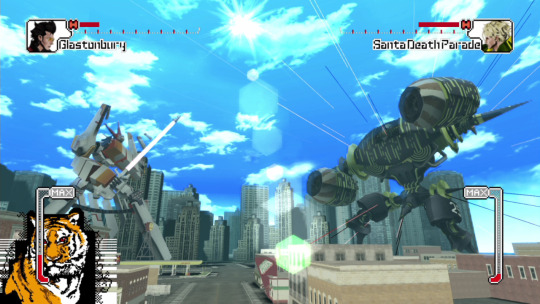
I already spent a couple of thousand words saying, essentially, that the game’s plot had some wasted potential. I missed the open world, even though there wasn’t really anything to do in it, having it there added a sense of scale to the world that simply wasn’t present when you were always just a second away from any location that you had to go to.
It’s not the worst suda51 game i’ve played (Shadows of the Damned), it’s just sort of okay. Squanders its potential and some of the fights are really annoying but it does have the best cat massaging animations in any video game I’ve ever played.
2. Bugsnax (2020)

Bugsnax is a really good game. I love the cute creatures. I love repeatedly saying Bunger to Forgie. The characters are neat, nicely varied and well voice acted. Eggabell and Lizabert are great I love these gay girls. I may or may not have gotten a little emotional with some of the background film reels you can find and relating a little too hard with Eggabell and anxiety. Floofty is also really great, I love the game’s absolute non-issue with them being non-binary. It’s cool and good. I did eventually turn them entirely into Bunger, but I eventually did everyone dirty like that it’s just the nature of the game.
The puzzles are sometimes kind of frustrating though, usually in the way that, you know what you need to do but managing to execute on that can be really tough, especially when the hot and cold elements start coming into play.
I won’t go into the story but like maybe skip ahead if you’re not interested in very vague spoilers. I was also really impressed how the game did eventually address the innate body horror of its premise. It was way past the point where I thought that the game was going to actually address any of that. Part of me wants to make an argument for the game secretly being a horror game, that even the cutesiness of the premise is an intentional malicious camoflauge. It’s obviously not that, but it is fun to think about how easily, how just a little redesign on some of the bugsnax at that key moment and tonally it would fit.
3. Travis Strikes Again: No More Heroes (2019)
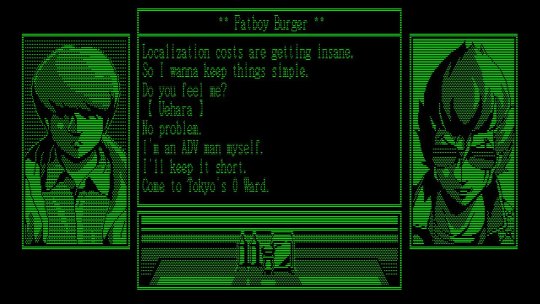
My favourite suda51 game is Killer7. I love the inherent weirdness, the strange characters who recur with strange, idiosyncratic dialogue. A lot of people did not enjoy Travis Strikes Again from what I understand, but for me this game is the closest any suda game has come to recapturing the things I liked about Killer7.
And hey, the gameplay is fluid and fun. The only real downsides for me is how padded out the game feels and how little variation there is from one game to another.
And hey should I be including little summaries as to what these games are? Okay so Travis Strikes Again is a side game in the No More Heroes series. Renowned assassin Travis Touchdown is in hiding. The father of one of his victims is given a Death Ball; a thing which is simultaneously a video game to be played in an extremely discontinued games console the Death Drive, and also a mystical artefact capable of summoning a dragon and granting the user a wish. Collect the Death Balls, play the games on them and bring Bad Girl back to life.
With the premise involving going into different video games I was sort of hoping that the gameplay would be wildly varied from game to game. It isn’t so much. Each game has a slightly different structure but only the racing game offers a variation on genre.
Also the game, in the final level, doesn’t so much homage Hotline Miami so much as attempt a full on crossover. I was just sort of weirded out by that whole part of the experience. I never really know how to feel about Hotline Miami in general after that game’s sequel.
Aside from the crypticness, the amount of worldbuilding detail spent explaining the Death Drive, its creator and her goals and beliefs, the other thing that I really love about this game is, it’s a bridging of so many Suda51 games. There’s so many cameos; an entire level which is a full on sequel to Shadows of the Damned, Mondo Zappa from Killer is Dead appears, an implied grown up version of Juliet Starling from Lollipop Chainsaw, a bunch of people I don’t know because I’ve never played The Silver Case. Even a character from Killer7, even if it is a character I don’t care for.
Overall it’s not a perfect game but I got to put Travis in a Disco Elysium shirt and I think that’s pretty fun.
4. Supraland: Six Inches Under (2022)

Premise: Essentially set in an enormous sandbox populated by tiny living meeple figures, this is a sequel to Supraland (2018). A great cataclysm has come to the land. You are plunged into an underground world where class disparity and capitalism must be overcome before you can return your people to the surface. Mechanically it’s a difficult one to place. Sort of open world sandboxy but most of your interactions with the world are puzzles to solve and slowly you amass an arsenal of different tools that allow you to solve different puzzles and to progress along the game’s narrative.
I would absolutely recommend Supraland, and who knows this game might even be better. Its certainly more focused in on its puzzles and exploration. Combat is at a minimum as compared to the first game and it’s sort of a blessing and a curse. The combat was the weakest part of the first game it makes a lot of sense to pare it back, but it leaves you with a problem; I was always broke. Never had enough coins to get all the upgrades I wanted, even into the post-game. In Supraland I’m reasonably sure that any coin shortage was solved by going and finding a room full of enemies, and the same just isn’t available here.
There’s also a lot more post game content to puzzle your way through, and weirdly that sort of put me off. I 100% completed Supraland because by the end I was just mopping up the few remaining things I hadn’t been able to get my hands on earlier. In Six Inches Under I felt I’d already experienced a conclusion and didn’t have the patience for the amount of content still remaining.
And, one weird personal preference but the order in which the upgrades are given to you in this game kind of irritated me. The first upgrade from the first game is the last thing you get and by the end I really wanted that cube.
I sound pretty down on this one, but honestly the puzzles are good, the sense of humour is extremely silly and often reference based but you’re likely to get some chuckles out of it at least. I guess I was just a little underwhelmed only in comparison to the original.
5. A Juggler’s Tale (2021)

Premise: The game is presented through a puppet-show. Abby is a juggler at a cruel circus. They keep her in a cage when she is not performing. It’s weird. She escapes from the circus and is finally free, however the ringmaster and hired goons pursue her. She must fight for her freedom. Mechanically it’s very much like a Limbo, or an Inside or Little Nightmares. Easy to fail 2d platforming with emphasis on hiding, evading, simple physics puzzles.
The thing about this one is that
Well I kind of really hated this one. Its such a waste of its own premise. Skip ahead if you’re averse to spoilers because I’m just going for it.
Part of what’s interesting about this game is that the puppetry isn’t just an aesthetic of the game. It has a gameplay purpose. Abby cannot go underneath certain objects, her strings get stuck, so you have to find some way to navigate around this obstacle. And it has a narrative purpose.
This game has a narrator who early on emphasises how free Abby is once she’s run away from the circus. It immediately put me in mind of The Stanley Parable (2013), a game with an incredibly voiced narrator which is entirely about choice and the illusion of freedom in video games. Immediately I feel as though this is going for a similar idea; Abby is technically free of the circus but not free of the narrative. As the game progresses Abby gets recaptured and as the narrator gloats about how foolish she was to try to run away she eventually snaps her strings and she is free. Here the narrator turns full on antagonist and you play out the rest of the game escaping from a hunter under his control before going back to free everyone at the circus from their strings.
1) This game isn’t about juggling. If you idle you do a juggling animation. There’s no reason this should be a Juggler’s Tale specifically.
2) The comparison to the Stanley Parable is unfortunate because the voice actor for the narrator in this cannot hold a candle to the voice actor for the narrator in the Stanley Parable. I know that’s a particularly high bar, it’s an unfair comparison but the game is invoking the same ideas in the same ways I can’t help that my brain made this connection.
3) Also every line the narrator says is in a semi-rhyming couplet. Except they more often than not don’t rhyme even slightly. Just like a similar sound maybe. And the attempt to bring them into this rhyming scheme creates the most disjointed and unnatural sounding sentences. God I wish I remembered some examples here but it was really distracting. It was distracting enough that I was debating turning the sound of the narrator all the way down and only didn’t because I could tell it was going to become a vital plot element.
4) The metaphor falls apart when you continue to control Abby after her strings are cut. She has no palpable difference in her own freedom, her own agency before and after they are cut. Before and after she is under your control, still under the control of the narrative, not the narrator’s narrative but the structure of the video game. For this to really work, to really click, either the game has to end when her strings are cut, or you have to take control of someone else.
The game has her running from a hired hunter at this point and the much more interesting version of this game would be you are now forced to play as the hunter by this furious narrator and maybe there’s a way that this part could be structured so that you could play it straight, play your role as intended and capture Abby, or you could intentionally play in such a way that ends with her cutting your strings too. There was such potential here. Such a clear and direct metaphor for control in video games and it was so frustrating to see it underutilized.
6. Pokemon Shining Pearl (2021)

You have to complete the entire national pokedex before the game will even let you see an eevee. Not recommended.
7. Patrick’s Parabox (2022)
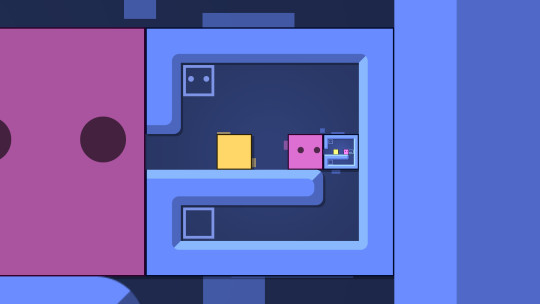
It’s a sokeban puzzle game where the boxes you push around can contain entire rooms and it takes this concept and exhaustively works through every possible permutation of what it could mean, what could be done with it. Every set of levels pushes the concept in some new direction, or toys with some aspect you may not have even considered up until that point. It’s probably going to be one of my games of the year just based on how thoroughly and effectively it explores its own premise.
8. #AkiRobots (2020)
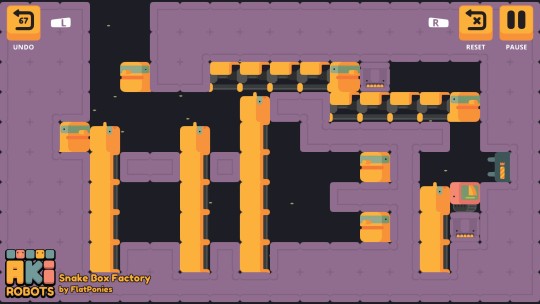
#AkiRobots is a simple puzzle game about guiding a robot through a side on 2d level to an end point. It has growing complexity with different kinds of robots introduced that follow different rules.
It's kind of a disservice to have played this one immediately after Patrick’s Parabox. It’s a fine puzzle game, but it doesn’t have as concise or unique a mechanic as Parabox. It iterates on its own mechanics well enough and it has the added complexity that you control all of the robots in a level at once, requiring you to think more strategically about your moves. It’s neat but its not the puzzle game I would recommend this month.
9. Lost Nova (2022)
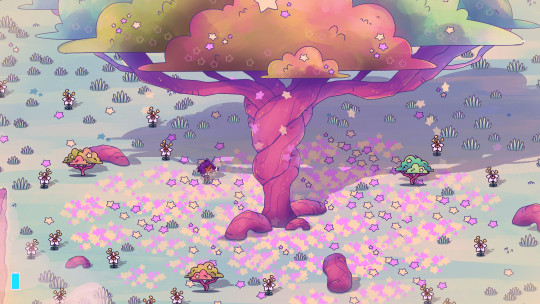
Premise: Ami is something of a workaholic, her best friend Quinn desperately wants her to take a vacation and suddenly she crash lands on an alien planet. She must repair her spaceship to leave, making friends and learning how to relax as she does so. In terms of gameplay it’s mostly exploration and resource collection focused. There’s no combat, just a fun little world to explore and lots of characters to meet.
It’s a really cute and chill game. It wears it’s themes pretty openly and manages to tie it into the narrative in a pretty neat way. I enjoyed it quite a bit and also by the way in the post game you can get a cute little axolotl friend. I love them so much.
10. The Room Two (2013)

Premise: There’s some kind evil black goo that your friend A.S. found and it’s making you solve puzzle rooms forever but maybe you can escape? God I do not even pretend to know the plot of this game series. It’s all told through little documents and seems to assume a baseline of knowledge that maybe I would have if I’d played the original recently but my memory is atrocious and I’m not actually convinced I ever really acquired the knowledge the game expects of me.
The point of the game is to solve intricate little puzzle boxes. To manipulate switches and push buttons and occasionally find a code elsewhere and find a place to input it. The strange arcane set dressing is sort of unnecessary to the experience. As inpenetrable as the plot is it does provide a variety of interesting locales for puzzle solving.
The worst part of these games is the moments where you missed some small hidden compartment and the puzzle solving grinds to a halt for a minute as you have to comb over the entire room looking for the next spot you need to interact with. There is a hint feature that does at least point you in the right direction but the pixel hunting is definitely a problem.
The best part of these games is simply the intricate nature of the puzzles, sliding open secret compartments, unfolding elaborate contraptions. In writing this I learned that they were originally made for ipad and that makes a lot of sense to me. The focus on the tactile seems like it would be pretty well served for touchscreen devices.
11. The Room Three (2015)

The first two games in this series are very similar in pacing, in fairly incomprehensible narrative, in mechanics. I was expecting pretty much the same experience here, I was taken by surprise to find that the puzzles in this one were a lot more intricate and involved and that the story was a lot more approachable.
The big improvement mechanically is the ability to walk around between multiple set locations. Imagine Myst. It’s that. It was playing this game that I suddenly noticed the similarities to Myst. Lots of puzzles involving complicated machinery, and a plot I generally had a bit of a difficulty getting a handle on, delivered primarily through notes dotted throughout.
It’s not one to one though, Myst games are usually fairly sprawling with puzzle elements sprinkled around its world, here the puzzles are very condensed, just a couple of rooms per chapter. Also this game doesn’t present the same kind of beautiful otherworldly environments you might want from a Myst.
One of its other new mechanics is an upgrade to your looking glass that allows you to shrink (?) or if not actually shrink then somehow project yourself into a metaphysical space that exists within certain objects and machines. Allowing you to manipulate a puzzle from the inside. It’s essentially just another screen you can go to but it is used well to create some memorable moments and puzzles.
I was genuinely surprised how much The Room Three did to elevate itself. I don’t know if I’d suggest skipping the first two, they’re not bad they just lack some of the complexity.
2 notes
·
View notes
Photo

I got a note from... yes, from an indie game developer/publisher whose game is set for launch on Steam... well, the game’s called Boreal Tales and Snot Bubbles Productions hopes PC gamers will check out the adventure/horror game on Steam on May 19th. It looks interesting and if it’s not got a little bit of Killer7 left on it’s shoulder or sleeve, I’ve been called wrong before.
Delve into the dream of a dying town in Boreal Tales, a fixed-camera game which will remind you the old PS1 classics, and explore an ubanized world as you solve a murder, find Sarah and complete the ritual. Boreal Tales contains strong language and gore such as disembodied heads, heads floating in blood, bodies hanging, rivers of blood, zombies eating corpses and disfigured people.
Apologies if any of that seemed like a spoiler. The thing is, if you don’t feel like waiting until May 19th you can see more of Boreal Tales on itch.io now.
1 note
·
View note
